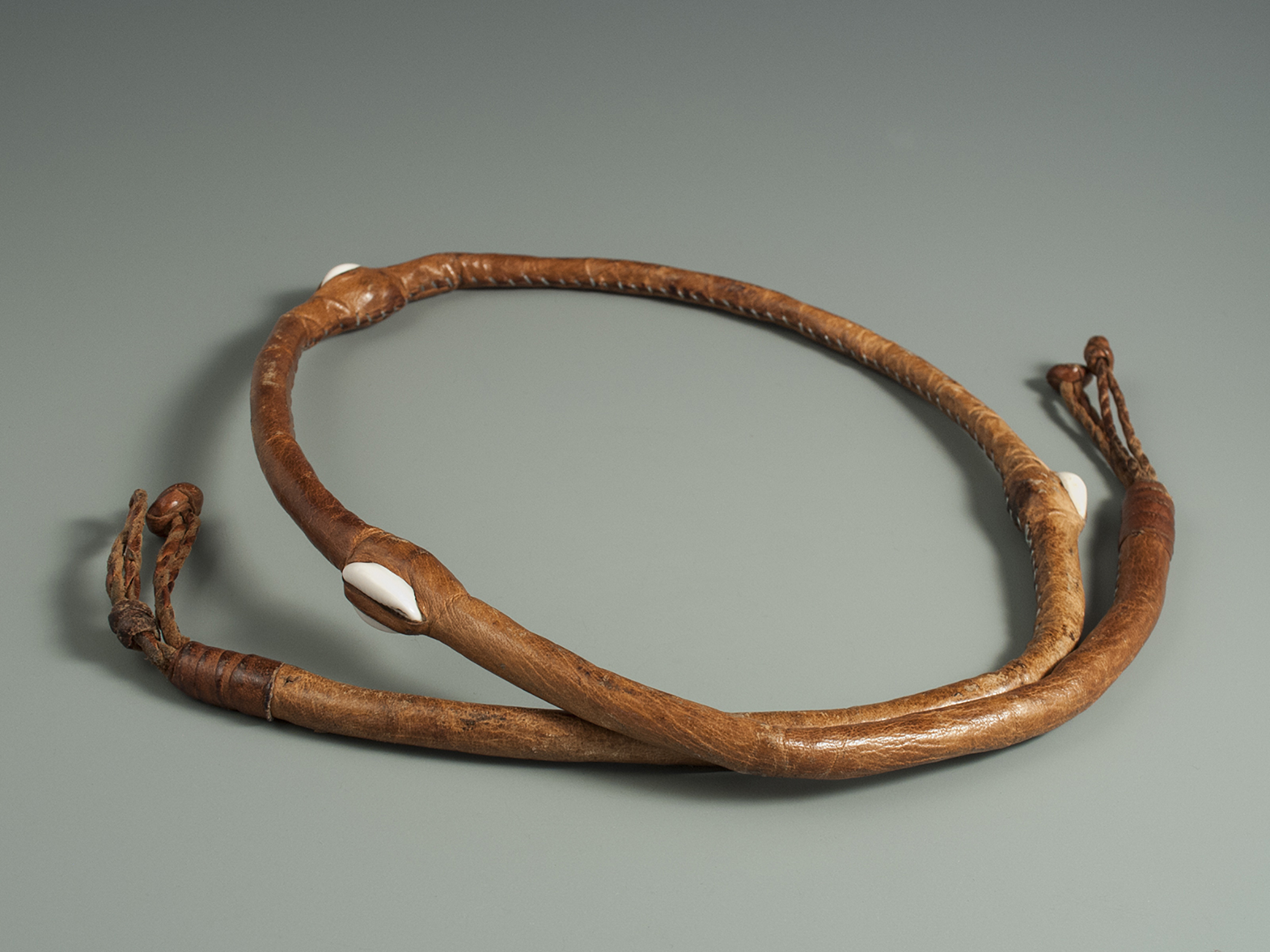Juju Protecture Belt
Senegal, 1994

As Sally and I prepared to leave Senegal, Malang disappeared into his tiny bedroom. He opened a weathered chest of drawers, and returned with two narrow leather belts. Each was inlaid with small white cowrie shells.
“These ju-ju belts are for removing obstacles that may lie in your path.” Malang dangled them in front of us like dead garden snakes. “You wear them beneath your clothing.” He demonstrated on me, fastening the belt around my waist. There were two eyelets. “These will allow you to pass effortlessly across borders, and will be especially useful in places where people would harass or injure you. Close one loop for slight danger, both loops if the danger is extreme.”
Malang had been our guide since we’d arrived in Dakar. He and I had the same birthday, March 6th, though he was a few years younger. He had driven us all around rural Dakar, introducing us to the most powerful local marabouts and shamans, male and female. Though assumedly Muslim, some specialized in the making and blessing of protective or wish-fulfilling ju-jus. These talismans came in infinite varieties, cobbled together from an unnerving assortment of animal parts: goat skins, beaver pelts, iguana hides and crocodile leather; buzzard claws, monkeys’ paws, goat teeth, rat skulls, porcupine quills, cat whiskers, rams’ horns, tortoise shells, hawk wings… In comparison, Malang’s offerings to us were yawningly tame.
Our plan was to depart Dakar, travel up the coast to St. Louis (the Senegalese version), enter Mauritania, and traverse the bitterly contested sands of Western Sahara north to Morocco.
Mauritania was bleak and unwelcoming. We had the added misfortune of entering the country during the hypoglycemic holiday of Ramadan. The entire population was fasting, the more devout going so far as to spit out their own saliva before swallowing. Still, our ju-jus lay coiled in our backpacks.
But the desert crossing, through Western Sahara to Morocco, was a harrowing adventure. Granted passage on a British expedition bus, we set off along a sand-covered road seeded with hidden landmines. A previous bus, owned by the same outfitter, had been badly damaged by one such mine (no one, fortunately, was killed). And our only guide across this potentially lethal landscape was a crude map, drawn on a paper napkin by a bribed border officer.
“Buckle up,” advised Sally, pulling Malang’s ju-ju belt from her backpack. “Both loops.”
And here I am to tell the tale.
